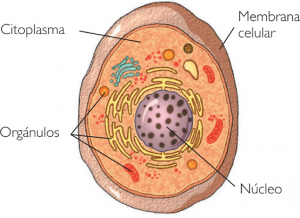 Animals can be classified according to their birth into oviparous and viviparous. Oviparous are those that hatch from eggs, such as birds, amphibians, crocodiles, turtles or snakes. On the other hand, the vipiparous are all those whose embryonic development takes place in the uterine cavity of the mother, where the necessary food and oxygen are received to form the organs, grow and develop until the moment of birth. This intrauterine development is what allows viviparous animals to be born fully formed. In addition to humans, the list of viviparous beings could be completed with the kangaroo, horse, dog, dolphin, rabbit and, ultimately, with all mammals.
Animals can be classified according to their birth into oviparous and viviparous. Oviparous are those that hatch from eggs, such as birds, amphibians, crocodiles, turtles or snakes. On the other hand, the vipiparous are all those whose embryonic development takes place in the uterine cavity of the mother, where the necessary food and oxygen are received to form the organs, grow and develop until the moment of birth. This intrauterine development is what allows viviparous animals to be born fully formed. In addition to humans, the list of viviparous beings could be completed with the kangaroo, horse, dog, dolphin, rabbit and, ultimately, with all mammals.
General characteristics of viviparous animals
As a general trend, the embryo of the offspring of the vipíraros develops within the mother's womb, specifically in the placenta. The placenta is the tissue that protects the fetus and is a membrane that allows all the basic vital exchanges for fetal development (food, oxygen transport and respiration). In some cases, the young develop outside the placenta, as in the case of marsupials (the young continue their evolution in the marsupial bag after birth).
Biologists believe that viviparism can be explained in relation to the evolution of species. In this sense, viviparism appeared as a protection mechanism for the offspring: being inside the mother, they were not exposed to the dangers of predatory animals.
Viviparous animals share similar mechanisms in reproduction. In this way, after fertilization occurs, the embryo is formed, which remains in the aforementioned structure, the placenta. With regard to gestation and the formation of the new being, each species has its own processes. When the offspring reaches the moment of maturation, it is expelled through the female's vaginal canal.
Special features
 Although viviparism is normally associated with mammalian animals, it must be remembered that there are also viviparous plants. This strange phenomenon has an explanation, since the seeds of these plants germinate when they are still attached to the mother plant. The case of viviparous plants is an exception in nature and, in fact, naturalists consider that these plants are doomed to disappear.
Although viviparism is normally associated with mammalian animals, it must be remembered that there are also viviparous plants. This strange phenomenon has an explanation, since the seeds of these plants germinate when they are still attached to the mother plant. The case of viviparous plants is an exception in nature and, in fact, naturalists consider that these plants are doomed to disappear.
In relation to fish, some species are ovoviviparous, which means that they are born from eggs, but these remain within the body and at the time of hatching the offspring are already independent.
Photos: iStock - arturbo / ledmark31









